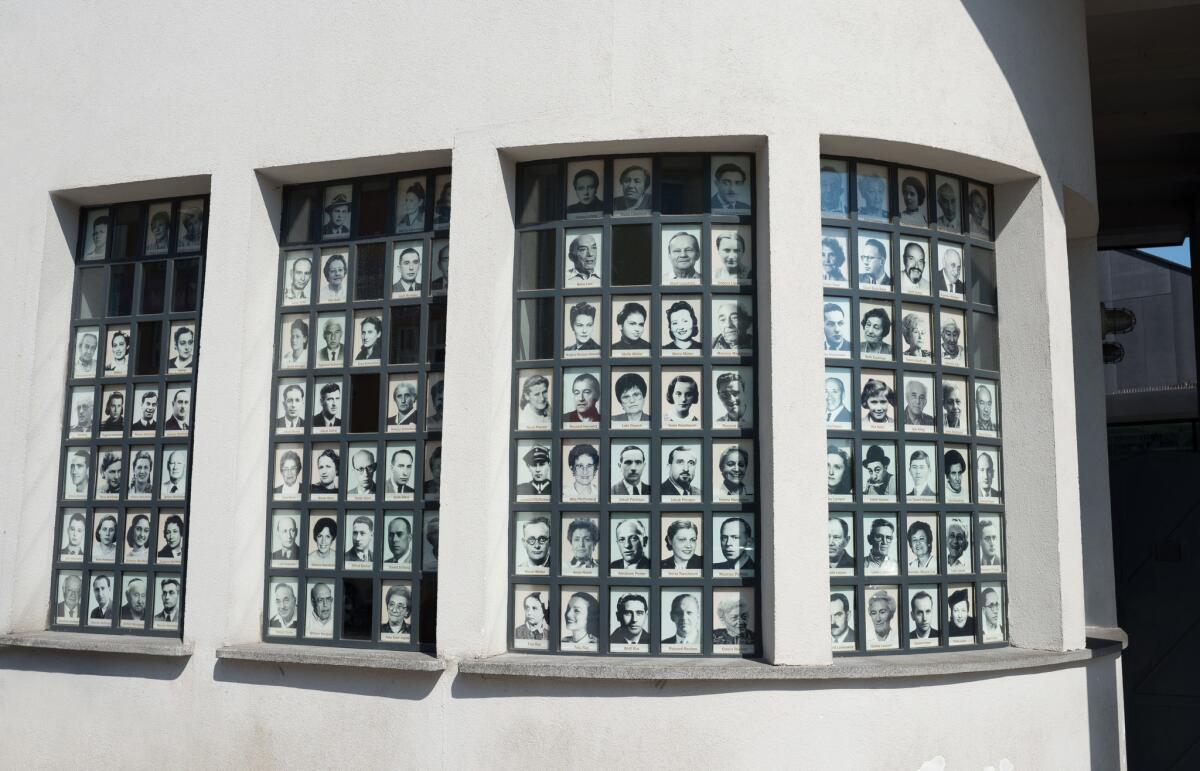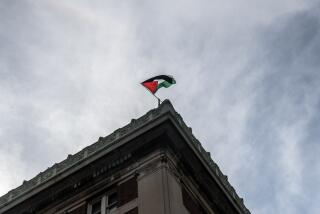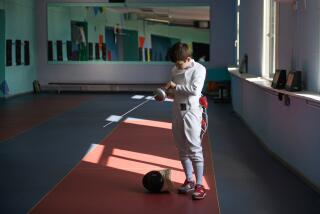Beyond the fairy-tale castle and the horse-drawn carriages, Krakow reveals a hipster side and a haunting past
Reporting from Krakow, Poland — Everything I’d heard about the beauty of central Krakow was true; if anything, it was undersold.
As clichéd as it sounds, the medieval center — the first recorded mention of it is from the 10th century — appears out of a fairy tale: turreted gates meticulously preserved; the art-filled, hilltop Wawel Castle; storefronts, churches and spires fronted by stone saints and angels; horse-drawn carriages on cobblestone streets; and a bugler, in a tower high above the main square, following a centuries-old tradition by playing a tune to mark the hour.
And yet — can I say this? — once the beauty wore off, I was a bit bored.
At the risk of sounding like a spoiled tourist, I’ve seen plenty of fairy-tale European towns. I hungered for grit.
I found it in Kazimierz, a neighborhood about 10 minutes on foot south of Krakow’s medieval center. Kazimierz is newer (well, 14th century) and used to be its own city back when rivers formed such boundaries. I returned over and over.
More than just grit, Kazimierz has known sadness and has emerged with a lower-to-the-ground, youthful and — dare I say it? — hipster-tinged exuberance.
There’s a not-just-for-tourists scene of art galleries, street food, street art and food trucks — did I say hipster? — plus sites of Jewish history and atmospheric restaurants. A large student population keeps things, you should pardon the expression, kracking.
Bustling market
I began my exploration at the open-air Hala Targowa market, just down the street from the apartment I rented. In business since 1920 and one of the largest markets in the country, it provided plenty of local color amid sellers of butter and flowers, vintage LPs and periodicals, jeans and house dresses.
Nearby vendors sold grilled kielbasa and Krakow’s signature kumpir — baked potatoes with a variety of fillings such as bacon and eggs and Greek salad.
Miodowa Street, behind the market and under the railroad tracks, led to the New Jewish Cemetery, both achingly beautiful and simply aching knowing the devastation that befell Krakow’s Jews under the Nazis.
Poland had Europe’s largest pre-World War II Jewish population, about 3 million, including 60,000 in Krakow, or about 25% of the city’s inhabitants. A mere 2,000 of the city’s Jews survived.
Hub of Jewish culture
The cemetery was haunting, but Kazimierz was surprisingly vibrant. Szeroka Street, its main thoroughfare, has roared back to life as the hub of local Jewish culture.
Europe’s largest Jewish cultural festival is centered here annually in late June and early July (June 22-July 1 this year).
The Old Synagogue at the end of the Dzielnica Zydowska (Jewish Square) dates from 1407 and now houses a Jewish museum. I visited instead the Remuh Synagogue (1553), which still holds services in its Romanesque-style sanctuary lighted with brass chandeliers.
In the cemetery behind Remuh Synagogue, I spotted a group of black-coated Hasidic Jews paying tribute at the grave of Moses Isserles, the great rabbinic scholar who taught here. On another wall, gravestones that did not survive the ravages of war, time and desecration were collaged together.
All along the square, Stars of David decorated the guardrails, and restaurants served traditional Jewish cuisine that would have made my nana kvell: gefilte fish, chicken soup, borscht, potato kugel and roast goose.
At the far end of the square, logistically and culinarily, Hamsa calls itself an “Israeli restobar” offering a more modern Middle Eastern menu; high, whitewashed ceilings; giant photos of Tel Aviv and the motto “hummus & happiness.” It was rocking at night, and on a side street outside the restaurant I could hear the ecstatic music of a klezmer band.
Street food and art
A short walk behind the synagogue led to Plac Nowy, or New Square. Once the site of a kosher poultry market, it now teems with stalls whose wares change daily: antiques, clothing, pet birds and more.
Stalls around a open-air pavilion at the center specialize in another local favorite, zapiekanki, which reminded me of open-faced sandwiches on airy hot-dog rolls.
The most basic is topped with melted cheese, but you can get creative with green onion, ham, mushrooms and other pizza-style toppings, and pretty much everything gets a swizzle of ketchup. Not surprisingly, zapiekanki are a popular drinking food among Krakow’s students.
I was also glad for Alchemia, an atmospheric pub on the corner of the square where I could nurture a coffee or beer over a slice of cake or bowl of soup and escape Krakow’s changeable weather.
Around another corner, Jozefa Street was chockablock with art and art galleries: enamel cups at Art Factory, clever illustrated cards and posters at Lookarna, art glass and modern Judaica at Szalom Galeria.
Nearby, at Wawrzynca and Waska streets, was a food truck pod that would be at home on an L.A. street. There were trucks selling Belgian frites, sushi and tube-shaped Hungarian-style “chimney” cakes.
The Big Red Restaurant, a London double-decker bus retrofitted with a kitchen downstairs and tables and chairs on the upper deck, served fish and chips.
Schindler’s factory

After all this good cheer, it was jarring to cross the Vistula River and see a weathered concrete wall, one of the last stretches of the enclosure that surrounded the Nazi-era Jewish Ghetto.
The barrel-vault pattern on top reminded me of Roman arches in Jerusalem, but a chill came over me when I heard a passerby remark that it was also the shape of traditional gravestones, foreshadowing the fate of the ghetto’s occupants.
Before the war, about 3,000 people, Jews and non-Jews, lived in the neighborhood that became the ghetto. The Nazis moved the non-Jews out and forced Jews from around Krakow into the ghetto, boosting the population to 17,000.
Their daily routine: humiliation (loss of work, forced to wear armbands), deprivation (300-calorie-a-day rations) and disease before deportation to Nazi death camps. Any non-Jew assisting Jews could face the same fate. After the war, the ghetto housed political prisoners under Stalinist rule.
Amid all this, there was one bright spot: the enamelware factory of Oskar Schindler, the German industrialist credited with saving the lives of 1,200 Jews in his employ.
Much of Steven Spielberg’s Oscar-winning film “Schindler’s List” was shot on location in Krakow.
Today the factory is a museum, expanding on the Schindler story to chronicle the stories of Cracovians of all backgrounds under Nazi occupation.
The Nazis made Krakow the headquarters of their governor general for the region so the locals were under particularly tight control. (That said, it’s probably why so much of the city center was preserved, unlike the devastation that befell Warsaw.)
A walk through the museum takes you from the 1939 invasion through the arrest of intellectuals, the renaming of streets (Krakow’s main market square, for example, became Adolf-Hitler-Platz) and much, much worse, to the ghetto’s liquidation in 1943.
Plaques and narrations tell the events in heartbreaking detail. The Hall of Choices asks each of us what we would have done in this time of nothing but horrific options. That question took on new life a year and a half after my visit. In March, the Polish parliament passed a law that “makes it illegal to attribute responsibility for or complicity during the Holocaust to the Polish nation or state,” according to Politifact.
Another part of Schindler’s factory is now MOCAK, Krakow’s contemporary art museum, another surprise. I had known about Poland’s leadership in graphic arts (its movie posters are legendary), but I was unprepared to be so engaged by the works of modern Polish artists on display here.
I spent an hour and could easily have spent much longer browsing the generously laid-out galleries of often challenging art — the main collection rotates once a year.
I left Krakow grateful for the balance I’d found: the beauty, pageantry and grace of the medieval center on the one hand, and Kazimierz on the other. With its art, angst, intimate spaces and stories that must not be forgotten, Kazimierz is where the city got real.
If you go
THE BEST WAY TO KRAKOW, POLAND
From LAX, From LAX, Lufthansa, Austrian, Scandinavia, LOT, Swiss, KLM, Norwegian, American, Delta and United offer connecting service (change of planes) to Krakow. Restricted round-trip airfare from $828, including taxes and fees.
TELEPHONES
To call the numbers below from the United States, dial 011 (the international dialing code), 48 (the country code for Poland) and the local number.
WHERE TO EAT
Hamsa, 2 Szeroka St., 515-150-145. Spirited, white-walled spot for modern Israeli cooking. Main dishes $10-$18.
Klub Alchemia, 5 Estery St.; 12-421-22-00. Jazz club and eatery with traditional and contemporary pub food and delicious apple pie. Mains $4-9.
Pod Baranem, 21 Gertrudy St.; 12-429-40-22. Traditional Polish cooking, from potato pancakes to chateaubriand, in a setting resembling the dining room in a refined country home. Mains $10-$21
WHAT TO DO
Oskar Schindler’s Factory, 4 Lipowa St.; 12-257-10-17. Open daily; shorter hours Mondays. Admission $7, with a limited number of free tickets for Mondays.
MOCAK (Museum of Contemporary Art in Krakow), 4 Lipowa St.; 12-263-40-00. Open 11 a.m.-7 p.m. Tuesdays-Sundays. Admission $4. Free admission on Tuesdays.
TO LEARN MORE
More to Read
Sign up for The Wild
We’ll help you find the best places to hike, bike and run, as well as the perfect silent spots for meditation and yoga.
You may occasionally receive promotional content from the Los Angeles Times.







